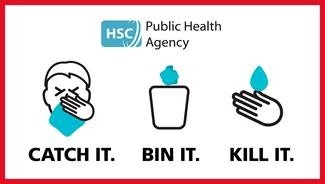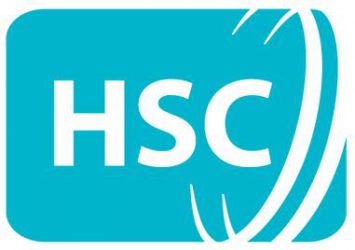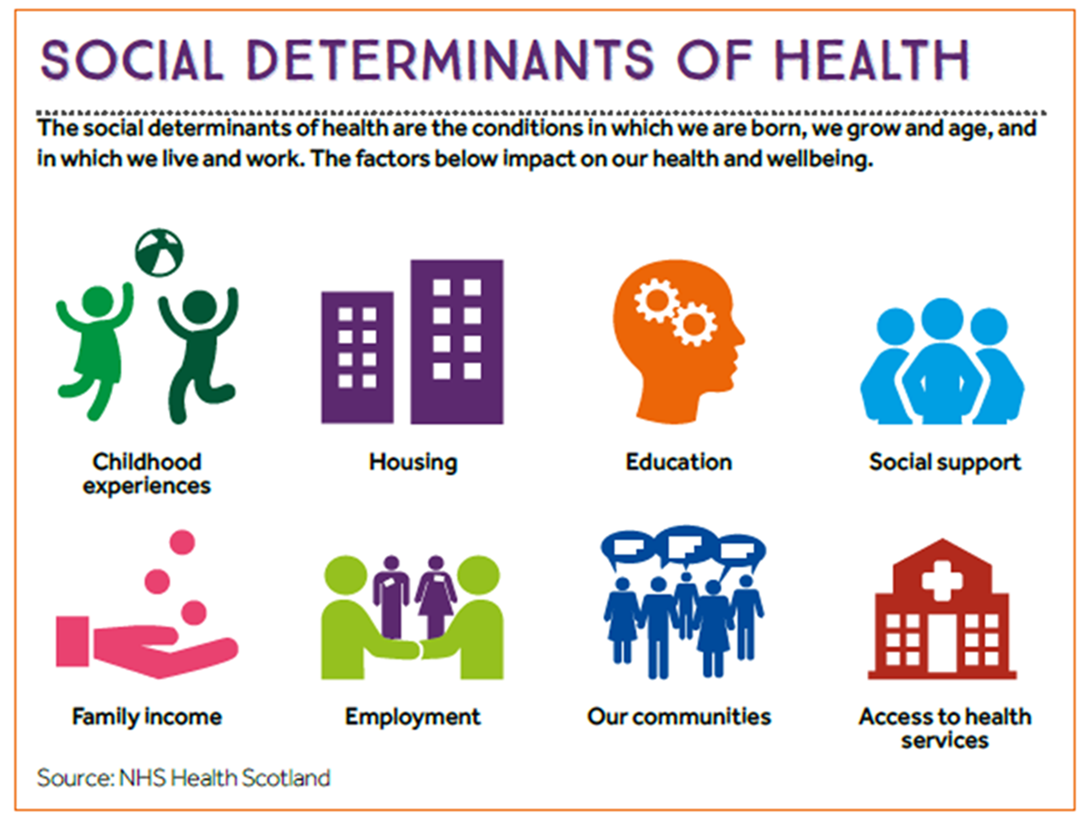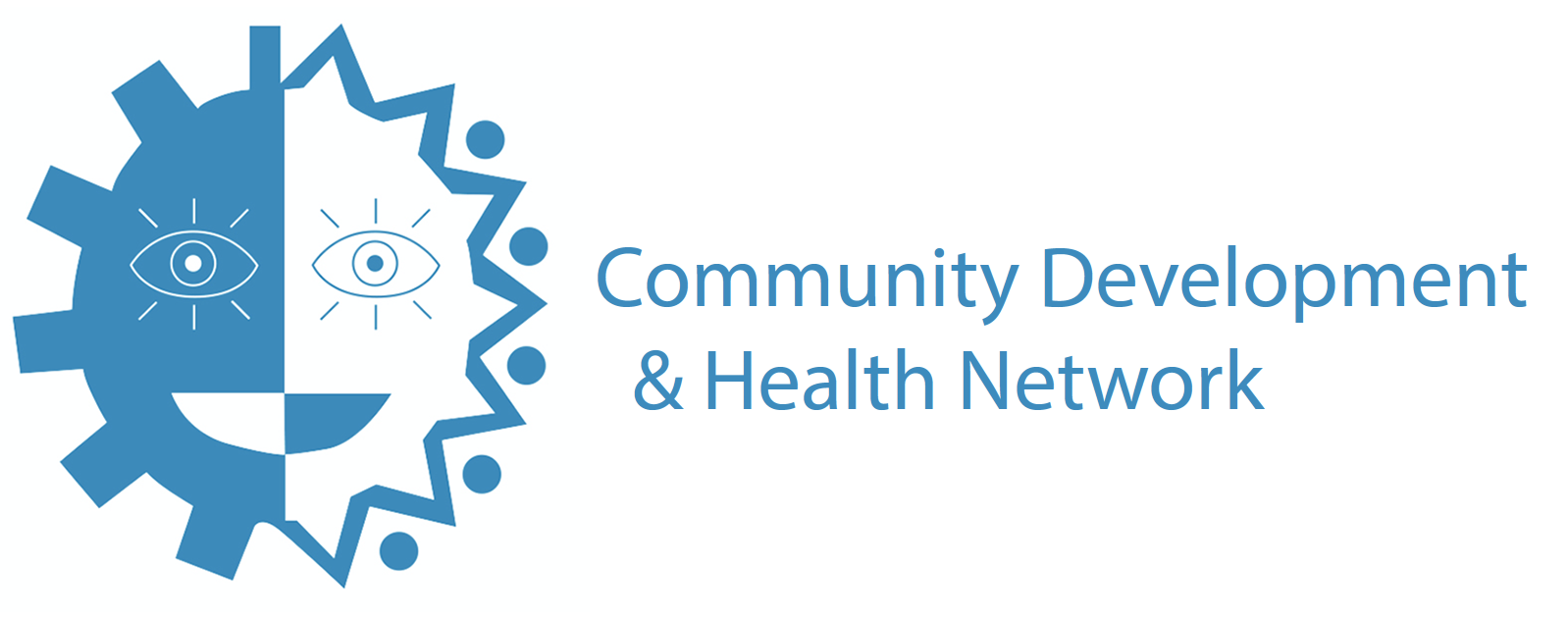Coronavirus (COVID-19) words and terms explained in plain English
The COVID-19 ID Project aims to improve people’s health literacy about COVID-19 by providing accurate and up-to-date information which will increase knowledge, understanding and confidence and enable people to make good health decisions.
During the COVID-19 outbreak there are many words and terms being used regularly on news, radio, TV and online that we might never have seen, heard or used before. To help improve everyone’s understanding we have compiled an A-Z glossary of COVID-19 words and terms with plain English explanations. This glossary has been adapted (with permission) for a Northern Ireland context from National Adult Literacy Agency Coronavirus COVID-19 words and terms explained in plain English.
As COVID-19 is a new and emerging situation we will be updating our glossary as often as possible with relevant words and terms. If there are any words and terms relating to COVID-19 that you would like to see included in the glossary, please email patriciaharte@cdhn.org
The latest information on the COVID-19 and its effects in Northern Ireland can be found on the following official websites:
Official information about all aspects of Covid-19
Health information about Covid-19
Impact of Covid-19 on health and social care services e.g. appointments with GP, dentist, hospital etc
Official Government information can be found on the Department of Health website and the Northern Ireland Executive website

ANOSMIA
The loss or a change in your normal sense of smell (it can also affect your sense of taste)
On 18th May 2020 the Chief Medical Officers (CMO) from England, Scotland, Wales and Northern Ireland released a statement telling people that Anosmia was now inlcuded as one of the symptoms of COVID-19. In their statement they said:
- People will need to self-isolate immediately if they develop a new continuous cough OR fever OR as of today, a loss or changed sense of normal smell or taste (Anosmia).
- All members of their household must also self-isolate according to current guidelines, unless the person with the symptoms receives a negative test result.
Read the full statement here: https://www.health-ni.gov.uk/news/statement-four-uk-chief-medical-officers
For more information on COVID-19 Symptoms click here
ANTIBODY
Your body makes antibodies when you get an infection. Your immune system uses antibodies to fight the infection from viruses and bacteria.
ANTIGEN
Antigens are found on the surface of cells, viruses and bacteria.
An antigen causes your immune system to make antibodies against it. This means your body does not recognise the substance and is trying to fight it off.
ASYMPTOMATIC
This is when you do not feel unwell and do not show any symptoms of COVID-19. However, you can still pass the virus on to others.
AT RISK GROUPS
There are some groups of people who may be more at-risk of serious illness if they catch COVID-19. Guidance for people at a higher risk from Covid-19 is available here.
CASE
A case is a person with COVID-19. An index case is the first confirmed case in a population, region, or family.
CATCH IT. BIN IT. KILL IT
This slogan is used as part of the advice from the Public Health Agency to help stop the spread of COVID-19:
- Catch it: if you cough or sneeze, use a tissue to cover your mouth and nose
- Bin it: throw it away carefully after use
- Kill it: wash your hands

CHIEF MEDICAL OFFICER (CMO)
The Chief Medical Officer (CMO) is the most senior government advisor on health-related matters and lead medical expert in the Department of Health. The CMO in Northern Ireland is Dr Michael McBride
CIRCUIT BREAKER LOCKDOWN
A short intensive period of strict restrictions for everyone to help curb the spread of covid-19
The idea of a “circuit breaker” – or partial lockdown – was first introduced in April 2020 in Singapore by the Prime Minister, Lee Hsien Loong. It involved schools and all but essential workplaces closed, as well as restrictions on restaurants and other public places.
CLINICAL TRIALS
These are types of research that study new tests and treatments to understand their effects on human health. They can be used to study the effectiveness and safety of medications (such as vaccines) by monitoring their effects on large groups of people.
CLOSE CONTACT
When you have been in 'close contact' with someone who has tested postive for COVID-19.
Information on what to do if you are a close contact of someone with Covid-19 is available here
CLUSTER
This refers to a number of people in the same space who all have the same disease. For example, a cluster of people in nursing homes or hospitals.
COCOONING
Cocooning was a term used by health officials in Republic of Ireland. It described the practice being used to protect those over 70 or extremely medically vulnerable people from coming into contact with COVID-19. It required people in these groups to stay at home at all times and avoid any face-to-face contact with others where possible. For more information visit Health and Safety Executive
In Northern Ireland this is referred to as shielding. Advice for people who are clinically extremely vulnerable is kept under continual review in line with the wider review of restrictions by the Northern Ireland Executive. More information can be found here.
COMMUNITY TRANSMISSION
This occurs where a person who gets COVID-19:
-
has not travelled to an affected area, and
-
has no connection to a known case.
It means that COVID-19 is spreading within the local community
COMMUNICABLE
This term describes a disease that can be spread from one person to another. COVID-19 is a communicable disease.
CO-MORBIDITY
This means having two different health conditions at the same time. COVID-19 has been found to be particularly severe for people who have other health issues.
COMPROMISED IMMUNE SYSTEM
This is where you have a weak immune system (immunosuppressed). There are many things that can cause a weak immune system, including:
-
Cancer treatment
-
Conditions such as HIV and AIDS
-
Medication such as steroids tablets
For more information visit NI Direct Coronavirus (COVID-19): guidance for people at higher risk from Covid-19
CONTACT (DIRECT AND INDIRECT)
Contact with someone with COVID-19 can include direct contact and indirect contact which can spread the virus.
- Direct contact is when you breathe in droplets from an infected person’s cough or sneeze through the air. That’s why keeping your distance to 2 metres apart is important.
-
Indirect contact is when you touch something that the infected person has touched with the virus and it is spread to you. That’s why cleaning regularly touched surfaces like door handles, light switches and so on is important.
CONTACT TRACING
When the health authorities try to find who has been in close contact with someone who has COVID-19 to see who else may be at risk of catching it.
Guidance on testing and tracing for COVID-19 has now changed, please visit www.nidirect.gov.uk/articles/coronavirus-covid-19-testing for further details.
CONTAGIOUS
This means that a disease can be spread from one person to another, typically by direct contact. This is why we wash our hands regularly and limit our contact with other people during this COVID-19 outbreak.
CONTAINMENT PHASE
This was an early step introduced to prevent the virus from spreading in the community for as long as possible. It involved identifying early cases and trying to establish who the infected person has been in contact with to try and limit the spread of COVID-19. Source: RTÉ website: the terminology of COVID-19
CONTAINMENT STRATEGY
Process of preventing transmission of COVID-19 from an infected individual to others. Part of the containment strategy includes isolating a person with COVID-19 from other people.
CORONAVIRUS COVID-19
A coronavirus is a type of virus. COVID-19 is a new strain of coronavirus. It can affect your lungs and airways. The name COVID-19 comes from the year it was first detected (2019) and using letters from CO-rona-VI-rus D-isease. Source: NI Direct Coronavirus (COVID-19): overview and advice
COVID-19 VARIANT
Viruses can constantly change through mutation and it is not unusual for new variants of a virus to occur over time.
Several variants of the virus that causes COVID-19 are being reported. Scientists are working to find out more about how easily these new variants might spread, if they could cause more severe illness, and whether vaccines will protect people against them.
We will update the A-Z guide as new information becomes available.
COVIDCert NI Mobile App
COVIDCert NI is a digital wallet for your Health & Social Care Northern Ireland (HSC NI) COVID certificates. For more information and to download the app visit https://covid-19.hscni.net/covidcert-ni-mobile-app/
COUGH (NEW OR CONTINUOUS)
This is one of the three main symptoms of COVID-19, the other main symptoms are a high temperature (fever) and a loss or changed sense of normal smell or taste (Anosmia).
New cough: A cough that you’ve never had before. For those with a chronic cough, this means that the cough will have worsened
Continuous cough: coughing for more than an hour on three or more occasions within a 24 hour period
For more information visit NI Direct Coronavirus (Covid-19): symptoms
DELAY PHASE
In this phase the government has taken measures to reduce the peak impact of the COVID-19 and to slow its spread. For example, shutting schools and colleges and placing restrictions on public gatherings are measures to reduce and delay the impact of COVID-19. Source: RTÉ website: the terminology of COVID-19
DEPARTMENT OF HEALTH
The Department of Health (DoH) is one of nine Northern Ireland Departments. Find out more about DoH here
DIAGNOSTICS
The methods used by healthcare staff to identify a particular illness. E.g. laboratory testing
DISEASE
An illness that affects a person, animal, or plant. It can prevent the body and mind from working normally.
DISINFECTANT
This is a chemical that kills bacteria. A common disinfectant is bleach. Disinfectants come in different forms such as liquid, spray bottles, wipes and concentrate.
ENDEMIC
The constant presence of a disease in a population within a certain area. Source: RTÉ website: the terminology of COVID-19
EPIDEMIC
This is a sudden increase in the number of cases of a disease – more than what’s typically expected for the population in that area.
EPIDEMIOLOGY
The study of the spread or pattern of sickness in a group of people.
FACE COVERING
These are most commonly made out of cloth and cover the nose and mouth. They can be secured to the head with ties or straps. They may be manufactured or home made.
For up to date information on face coverings visit NI Direct Coronavirus (COVID-19): face coverings
See also MASKS
FACE VISOR/SHIELD
A face visor or shield is made out of plastic and covers the entire face
The use of face visors or shields is not recommended by the Public Health Agency. They do not offer the same protection as a a face covering which covers the nose and the mouth. A face covering will provide better protection from the risk of infection from COVID-19. Source: NI Direct Face visors
See also: FACE COVERINGS
FALSE INFORMATION
False information is news, stories or hoaxes created to deliberately misinform or deceive readers. Always get your facts through trusted sources. As part of COVID-19 ID Project we worked in partnership with FactCheckNI to fact check unofficial information about COVID-19. You can read our fact checked articles here. CDHN will only publish official or fact checked information about COVID-19 on social media and on our website. Official websites in NI to get COVID-19 information are at the start of this page.
FAKE NEWS
Fake news is news or stories on the internet or social media that are not true. There are two kinds of fake news:
-
False stories that are deliberately published or sent around, in order to make people believe something untrue or to get lots of people to visit a website. These are deliberate lies that are put online, even though the person writing them knows that they are made up.
-
Stories that may have some truth to them, but they're not completely accurate. This is because the people writing them - for example, journalists, bloggers or people putting posts up on their Facebook profiles - don't check all of the facts before publishing the story, or they might exaggerate some of it.
This is happening a lot with COVID-19 with many people publishing these stories in order to get as many shares as possible.
Source: https://www.bbc.co.uk/newsround/38906931
FACT CHECKING
This is the process of checking that all the facts in a piece of writing, a news article, a speech, a social media post etc are correct.
FEVER (HIGH TEMPERATURE)
Fever or high temperature is one of the three main symptoms of COVID-19, the other main symptoms are a new, continuous cough (if you usually have a cough, it may be worse than usual) and a loss or changed sense of normal smell or taste (Anosmia).
A Fever or High Temperature means you are hot to touch on your chest or back. It is not necessary to have a thermometer to check your temperature.
A temperature of 38C or more is considered a high temperature (fever)
IMPORTANT
-
It's not always easy to take a temperature accurately
-
If you feel hot or shivery, you may have a high temperature even if a thermometer says your temperature is below 38C Source: NHS
For more information on symptoms of Covid-19 visit NI Direct Coronavirus (Covid-19): symptoms
FLU
Flu is an illness caused by the influenza virus. It occurs every year, usually in winter. Find out more on the flu here.
GOV.UK WEBSITE
This is a central website for UK government services and information. In NI we have our own local websites where you can find out more under Health and Social Care. NI Direct has links to all Health and Government information.
HAND HYGIENE AND HANDWASHING
Hand hygiene is a way of cleaning your hands that reduces harmful bacteria on them and stops the spread of harmful germs. The best way to prevent the spread of infections, including COVID-19, is good hand hygiene. This means washing your hands regularly using soap and water and drying them with paper towels. Watch a video here
For more information about hand hygiene visit NI Direct Hand Hygiene
HEALTH AND SOCIAL CARE (HSC)

The National Health Service (NHS) in Northern Ireland is referred to as Health and Social Care (HSC) . There are a number of HSC organisations who work together to plan, deliver and monitor Health and Social Care across Northern Ireland. They all have hscni.net websites. You can find out more here
Information on COVID-19 can be found on the following HSCNI sites.
6 trusts
Official Government information can be found on the Department of Health website and the Northern Ireland Executive website.
To find out more about the structure of our Health system in Northern Ireland see our article with FactCheckNI here
HEALTH INEQUALITIES
Everyone should have the same opportunity to enjoy a healthy life but that is not always the case. The conditions in which we are born, grow, live, work and age can affect our health and well-being and these factors are called the Social Determinants of Health (SDOH), see graphic below.
The differences in how people experience the SDOH across our communities are often unfair and unavoidable. These differences are called health inequalities.
Covid-19 has made these inequalities worse for those already struggling and for others where circumstances have changed because of the pandemic. These include people in low paid or insecure jobs, people living with existing health conditions, people who were already lonely, isolated or experiencing challenges in their homes, like domestic violence, child abuse and addiction to drugs and alcohol. Many are finding it hard to pay their bills, to buy food and to access the services they need. This can lead to a feeling out of control, increased stress and poorer health and well-being. For more information on health inequalities including factsheets, policy documents and tool kits visit https://elevateni.org/resources/health-inequalities/

HEALTH LITERACY
Health literacy is about our knowledge, skills, understanding and confidence to be able to use health and care information and services to make good health decisions. Source: Western Health Literacy Partnership 2019.
Strong health literacy skills are important to help us understand and interpret health information and changing health messages and apply them to our lives and circumstances. This is particularly relevant with Covid-19 as information and guidance can frequently change. For more informaton on CDHN's Health Literacy work click here
HEALTH MINISTER
The Health Minister in Northern Ireland has overall responsibility for the Department of Health. The minister assisted by the Department of Health make policy and legislation for health in Northern Ireland. The Health Minister in Northern Ireland is Robin Swann.
HERD IMMUNITY
This is when a high percentage of the community is immune to a disease, usually through vaccination and/or prior illness. When there is a high level of herd immunity against a particular disease then infection stops spreading in the community. This is why people are encouraged to get vaccinations, both to protect themselves and others.
HIGH TEMPERATURE
High temperature or Fever is one of the three main symptoms of COVID-19, the other main symptoms are a new, continuous cough (if you usually have a cough, it may be worse than usual) and a loss or changed sense of normal smell or taste (Anosmia).
A High Temperature or Fever means you are hot to touch on your chest or back. It is not necessary to have a thermometer to check your temperature. A temperature of 38C or more is considered a high temperature (fever).
IMPORTANT
-
It's not always easy to take a temperature accurately.
-
If you feel hot or shivery, you may have a high temperature even if a thermometer says your temperature is below 38C. Source: NHS
For more information on symptoms of Covid-19 visit NI Direct Coronavirus (Covid-19): symptoms
IMMUNISATION
This is process where a person is made immune or resistant to an infectious disease, usually by giving them a vaccine.
INCUBATION PERIOD
The time between when you are exposed to the virus and when symptoms and signs become obvious.
INFODEMIC
This is when there is too much information – some accurate and some not.
An infodemic can make it hard for people to find trustworthy sources and reliable guidance when they need it.
Source: WHO Situation Report 13, February 2020
LOCKDOWN
These are the Government rules to limit contact between people to stop the spread of COVID-19. During lockdown everyone is asked to stay at home unless they had a reasonable excuse or need for leaving.
A first lockdown was introduced in NI at the end of March 2020. Since then the rules have changed as the situation with COVID-19 changed.
For up to date information visit https://www.nidirect.gov.uk/campaigns/coronavirus-covid-19
MASKS
Information from the World Health Organisation about masks and why and when people should wear them is available here
To find out more about the current rules regarding face covering/masks in NI click here
See also FACE COVERING
MENTAL HEALTH AND WELLBEING
We all have mental health, just like we all have physical health. Sometimes we feel well, and sometimes we don’t. Mental health is about how we think, feel and act, and this is always changing. When our mental health is good, we enjoy being around other people and we feel able to take on challenges and new experiences. But when our mental health is not so good, we can find it much harder to cope
Source: youngminds.org.uk
The last couple of years have been a worrying and challenging time, with so much uncertainty about what will happen and big changes to our everyday lives due to COVID-19. It’s important we take care of our mental and emotional wellbeing during this time.
For a range of information, self-help guides and ways to access help and support visit https://communitywellbeing.info/ (formerly Covid-19 Wellbeing NI)
MISINFORMATION
This is false or inaccurate information that deliberately intends to deceive.
MITIGATION PHASE
in this phase, the aim is to reduce the damage of COVID-19 in the community by implementing a number of measures such as:
-
providing hospitals with the support they need to maintain essential services as COVID-19 spreads
-
helping communities to reduce the overall impact of COVID-19 on their lives, businesses and communities
MORBIDITY RATE
This is the proportion of people who have an illness in the population. It is usually considered in terms of a percentage or per 100,000 people.
MORTALITY RATE
This is the proportion of people who have died from an illness in the population. It may be expressed as a percentage or per 100,000.
OUTBREAK
A number of disease cases higher than what is normally expected.
PANDEMIC
This is when an epidemic spreads between countries affecting a large number of people.
PERSONAL PROTECTIVE EQUIPMENT (PPE)
This is equipment that will protect the user against health or safety risks at work. It includes for example masks, gloves, gowns and eye protection.
PHYSICAL DISTANCING
This means people are separated out. To try and stop the spread of COVID-19 when we go outside we should continue to make sure we are 2 metres ( 6 foot) away from other people. This is also called social distancing.
POLYMERASE CHAIN REACTION (PCR) TESTING
PCR testing is one of the tests being used to check if someone has COVID-19. The test involves taking a swab of the nose and the back of the throat.
The sample is then sent to a laboratory and scientists can check if the virus that causes COVID-19 is present.
PRE-EXISTING CONDITION
This means any condition for which the patient has already received medical advice or treatment. For example, diabetes, cancer, lung disease and heart disease. It can also be called an underlying condition.
QUARANTINE AND SELF QUARANTINE
A period of time where a person or animal with a contagious disease is isolated.
Self-quarantine is where you restrict your movements to avoid contact with other people within your home and in social situations for a period of time – in Northern Ireland it is called self-isolating. For more information on the current guidance for people testing postive with COVID-19 click here
R VALUE
The R value was used to tell us the average number of people one infected person can pass coronavirus (COVID-19) onto. For example, if a virus has an R value of 3, it means that every person with the virus will pass it on to 3 other people if we are not doing anything to stop the spread.
Click here to watch a video explaining the R value
RECOVERY PLAN
A plan the government will use to start lifting lockdown rules and restrictions that were introduced to try and stop the spread of COVID-19.
On 12th May 2020 when the number of positive COVID-19 began to reduce in NI, the Northern Ireland Executive released a five-step recovery plan that explained how they would ease rules and slowly move out of the lockdown. You can find the plan here.
However, as the situation with COVID-19 continues to change, the Government's response has had to continue to change also. For up to date information on how to help stop the spread of COVID-19 click here
RESPIRATORY
This means breathing. Our lungs help us to breathe.
RESPIRATORY HYGIENE
These are measures to prevent infection such as:
-
Covering your nose or mouth with a tissue when coughing or sneezing and getting rid of the used tissue in a waste bin and washing your hands.
-
Coughing or sneezing into the inner elbow (upper sleeve) rather than into the hand, if no tissues are available.
-
Keeping unwashed hands away from the mouth, eyes and nose.
RESTRICTED MOVEMENT
This means avoiding contact with other people and social situations as much as possible.
For up to date information visit NI Direct Coronavirus (COVID-19): how to stay safe and help prevent the spread
SELF ISOLATING
This means staying indoors and avoiding contact with other people.
For up to date information visit NI Direct Coronavirus (COVID-19): testing
SHIELDING
At the beginning of the pandemic, shielding was used to protect extremely vulnerable people from coming into contact with COVID-19. It required people who are at a very high risk of severe illness from COVID-19 because of an underlying health condition to stay at home at all times and avoid any face-to-face contact with other people.
Since 31 July 2020 sheilding for extremely vulnerable people has been paused however those who are extremely vulnerable are still being asked to be particularly careful in following the advice on limiting household contacts, social distancing, hand washing and wearing a face covering.
For up to date information and guidance visit Coronavirus (COVID-19): guidance for people at higher risk from COVID-19
SOCIAL DISTANCING
This means you stay away from people, so less people get the virus. For up to date information visit NI Direct Coronavirus (COVID-19): how to stay safe and help prevent the spread
SPREAD (STOP THE SPREAD)
COVID-19 is spread through sneeze and or cough droplets. If you cough or sneeze, use a tissue to cover your mouth and nose, throw it away carefully after use, and wash your hands. For up to date information visit NI Direct Coronavirus (COVID-19): how to stay safe and help prevent the spread
STOPCOVID NI CONTACT TRACING APP
The StopCOVID NI app was a contact tracing app for Northern Ireland first launched in July 2020. A contact tracing app is a smartphone application that helps people detect if they have been in close contact with someone who has subsequently received a positive test for COVID-19.
Routine contact tracing of close contacts outside of households has stopped and the StopCOVID NI app has been suspended visit NI Direct Coronavirus (Covid-19): testing for more information.
SYMPTOMS OF CORONAVIRUS (COVID-19)
There are signs that you might have COVID-19
The main symptoms to look out for are:
-
a high temperature – this means you feel hot to touch on your chest or back (you do not need to measure your temperature);
-
a new, continuous (ongoing) cough – this means coughing a lot for more than an hour, or 3 or more coughing episodes in 24 hours (if you usually have a cough, it may be worse than usual)
-
anosmia - the loss or a change in your normal sense of smell (it can also affect your sense of taste)
For up to date information visit NI Direct Coronavirus (Covid-19): symptoms
SUPER SPREADER
This is a person who infects significantly more people than usual. You can read more about this term in this article in the Guardian (published March 2020).
SUPPLY CHAIN
This is a system of organisations, people, activities, information, and resources involved in moving a product or service from supplier to customer. In relation to COVID-19, a supply chain is about how food and other products get from a farm or factory into our supermarkets and shops.
SUPPPORT BUBBLE
This was a term used as part of Government restrictions. It described the need for people to only be in contact with a small number of other people, to help stop the spread of COVID-19.
Regulations and restrictions continue to change as the situation with COVID-19 changes. For up to date information visit https://www.nidirect.gov.uk/campaigns/coronavirus-covid-19
SURGE
A sudden increase in cases of people infected with COVID-19.
SYMPTOMATIC PERSON
This is a person who has symptoms of COVID-19 and can spread it to other people. For more on COVID-19 symptoms visit NI Direct Symptoms of coronavirus (COVID-19)
TESTING
This is where people with symptoms that could be COVID-19 are checked for the virus by taking a swab from their nose or mouth.
Everyone with symptoms of coronavirus (COVID-19) is now eligible for testing. For more information (including how to arrange a test) click here
TRANSMISSION
The act of transferring something from one person or place to another. In the case of COVID-19, this means transferring the virus from one person to another by coming into close contact with someone who has the virus and may be coughing or sneezing. You can also get the virus from touching surfaces that someone who has the virus has coughed or sneezed on.
TRIAGE
This is the process of sorting people based on their need for immediate medical treatment. It is used in hospitals to make sure the sickest people are seen by medical staff first.
UNDERLYING CONDITION
This means any condition for which the patient has already received medical advice or treatment. For example, diabetes, cancer, lung disease and heart disease. It can also be called a pre-existing condition. People with underlying conditions are more at risk of serious illness if they catch COVID-19.
VACCINE
This is a product that helps the body’s immune system to fight against infections. Most vaccines are given by an injection, but some are given orally (by mouth) or sprayed into the nose.
Click here to watch a video that helps explain what vaccines are and how they can help in the fight against Covid-19 (first published November 2020)
For up to date information and guidance on COVID-19 vaccines, visit NI Direct Get a COVID-19 vaccination and booster in Northern Ireland
The Public Health Agency has provided information about the vaccination programme available here: Northern Ireland COVID-19 vaccination programme
VECTOR/S
In medicine, a vector is a carrier of disease.
VENTILATOR
This is a machine to support breathing. It helps to get oxygen into the lungs, removes carbon dioxide from the body and helps people breathe easier. It can also breathe for people who cannot breathe on their own.
VIRAL LOAD
A person’s viral load is simply how much of the virus they have in their body.
Research is showing that a person’s viral load might determine how sick they will get. Studies are ongoing to find out more about viral load and COVID-19.
Source: The Lancet
VIROLOGIST
A scientist or doctor who studies viruses and the diseases viruses cause.
VIRUS
It is a tiny, living thing (particle) that causes disease and sickness when a person becomes infected with the virus.
VULNERABLE PERSON OR PEOPLE
A vulnerable person is someone in need of special care, support, or protection. During the COVID-19 outbreak vulnerable people are those who may be more at-risk of serious illness if they catch COVID-19.
Guidance for people at a higher risk from Covid-19 is available here.
WHO (WORLD HEALTH ORGANISATION)
The authority responsible for public health within the United Nations system (about 53 countries). It has excellent information resources including videos about washing hands and how-to social distance. The website is https://www.who.int/
WUHAN
This is the city in China where the first case of COVID-19 was discovered.
Definitions are taken and adapted from:
-
Newspapers, TV and radio such as RTÉ news, BBC news and glossary of terms in Time magazine
-
Health Protection and Surveillance Centre (HPSC) A to Z list,
-
Dictionaries – Merriam-Webster have added new words to their dictionary.




















